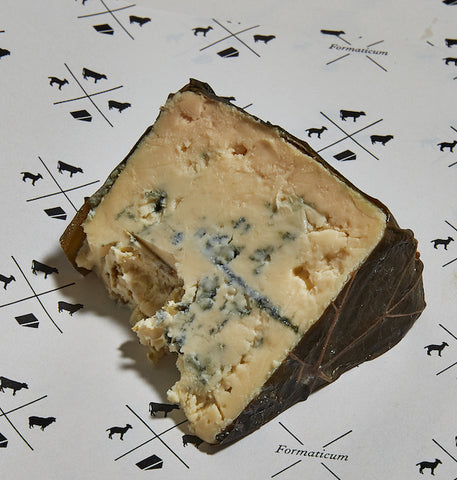Have you ever been in front of a cheese counter, unsure of where to begin? Don’t worry, we can help with that. Understanding the 5 basic types of cheese will help guide you at the cheese counter and make it easier to go home with the perfect selection. No matter the type, try to only buy as much cheese as you can eat within a few days. If you find yourself with a lot of cheese, we’ll help you keep it fresh.
Let’s walk through the 5 basic cheese types, and how to store them!

- Fresh Cheese, like Burrata
Shelf-life: 1 – 3 Days
Store in: Formaticum Cheese Storage Sheets
This category includes anything that’s unaged and has no rind (think cheese curds or ricotta). These cheeses have the highest-moisture content, which means they have a soft texture that’s either spreadable like chèvre or crumbly like feta. It also means they’ll spoil quickly, so eat them just a few days after opening. The only exception is Feta will last a couple of weeks when stored in its brine.

- Bloomy Rind Cheeses, like Casatica di Bufala
Shelf-life: 5 – 10 days
Store in: Formaticum Cheese Storage Sheets
Any cheese with a white, pillow-y outside is in the bloomy rind family. A lot of these cheeses have unctuous, buttery flavors that develop notes of mushrooms and earth near the rinds. They can be soft and oozing like camembert, or dense and cakey like Humboldt Fog. Their shelf-life depends on their ripeness: if it’s oozing, eat it within a couple days. If it’s firm, you have more time. Keep them in storage sheets to prevent them from getting squished.

- Washed Rind Cheeses, like Gubbeen
Shelf-life: 7 – 14 days.
Store in: Formaticum Cheese Storage Sheets or Formaticum Cheese Storage Bags
If you see a cheese with a red, pink, or orange rind, you can safely assume that it’s stinky. These are washed-rind cheeses, and while their funky aroma can be strong, they’ve got a much bigger bark than bite. Underneath the stinky rind, it’s usually much milder with a custard-y interior that melts in the mouth with broth-y, savory, and beefy notes. Store soft, gooey wheels in storage sheets, and firmer, more durable ones in bags.

- Aged Cheeses, like Moringhello
Shelf-life: 3 – 4 weeks
Store in: Formaticum Cheese Storage Bags
This is the broadest category of cheese, and includes everything from semi-firm Havarti to crunchy Parmigiano Reggiano. The oldest wheels have the lowest moisture content and are great for any traveling turophiles, since they’ll do fine outside of refrigeration. They’re very durable and can even develop crunchy crystals as they age. Younger ones will last 2 – 3 weeks, while older ones like Parmigiano can keep for over a month.

- Blue Cheeses, like Rogue River Blue
Shelf-life: 1 – 2 weeks
Store in: Formaticum Cheese Storage Bags
The most polarizing of all cheeses: you either love it or you hate it. Blue cheeses have a mold stirred in to the vat, creating pockets or streaks of blue, gray, or even green. These pockets need oxygen to grow, so many blues are pierced with needs to create airflow. They also have extra salt to help the molds develop. Soft, creamy blue cheeses like Cambozola will stay fresh for a week, and firm, crumbly ones like Stilton can last twice as long.
